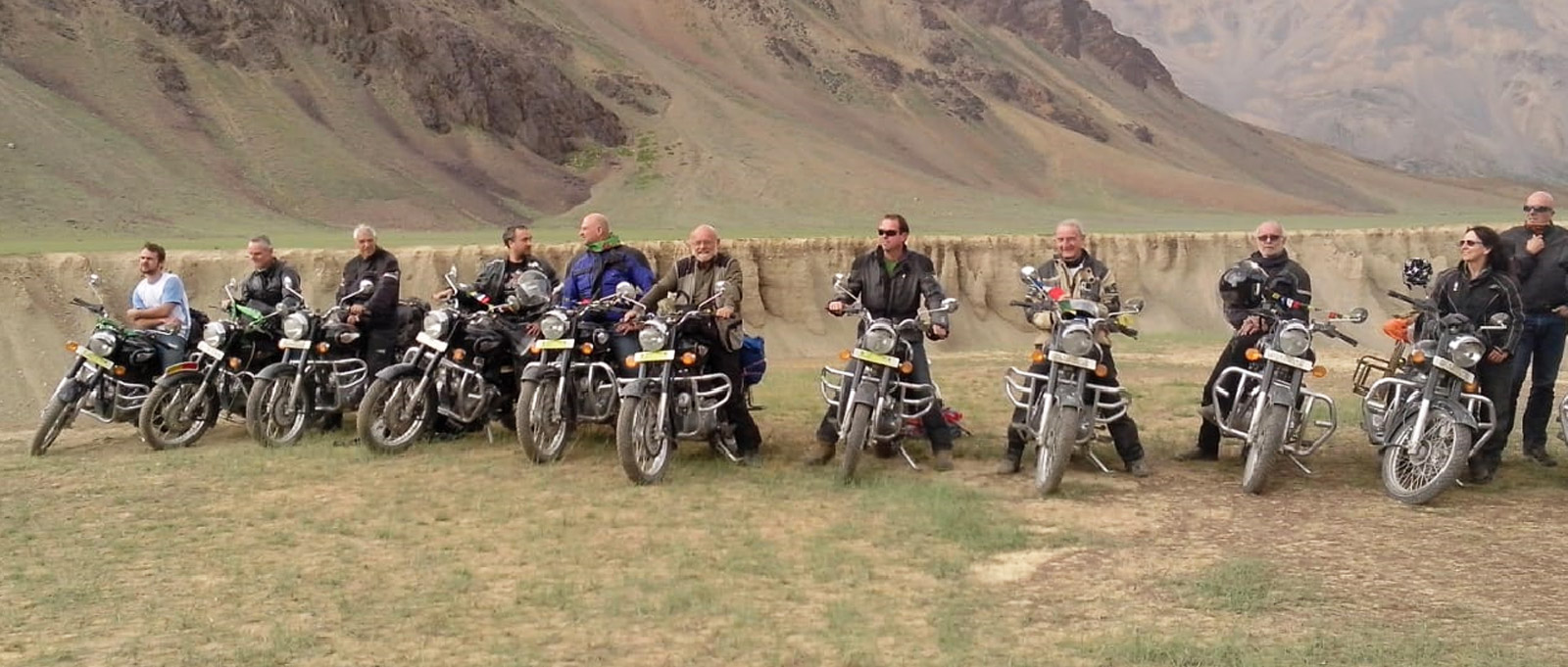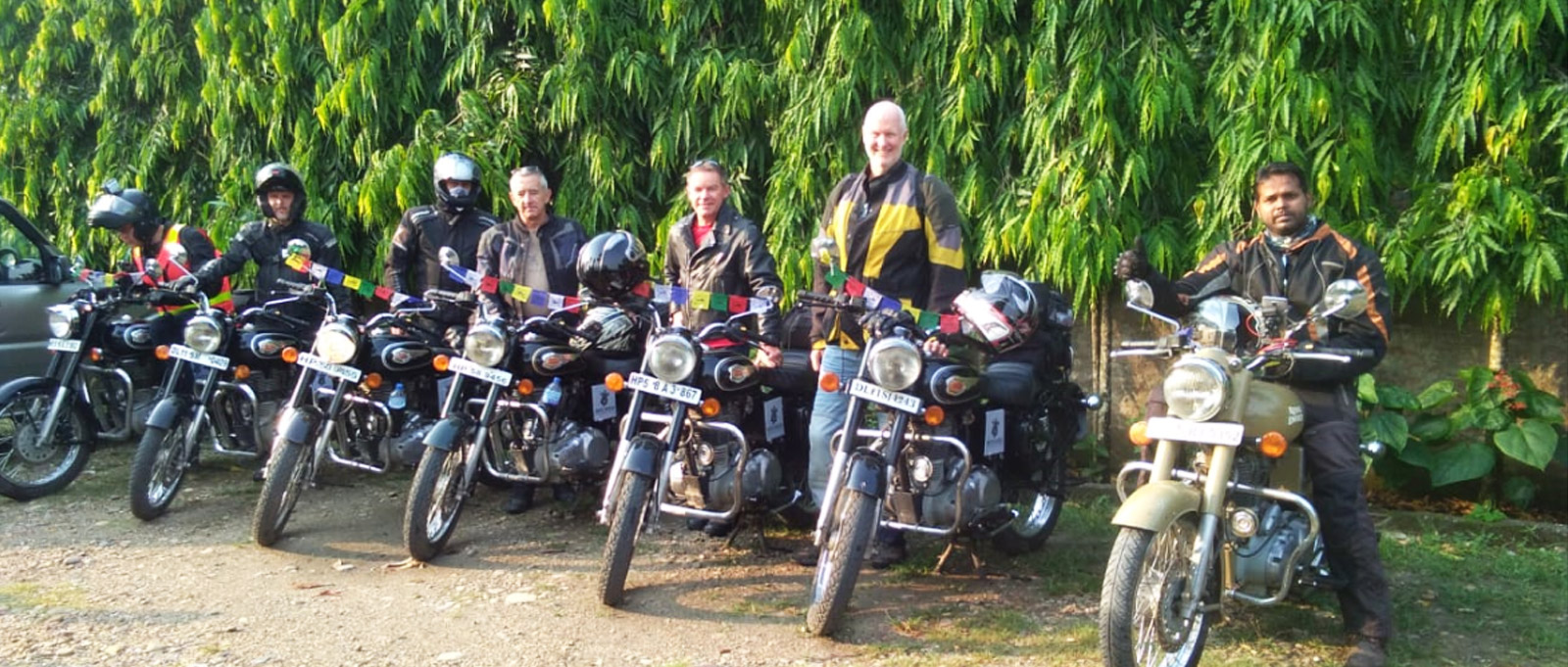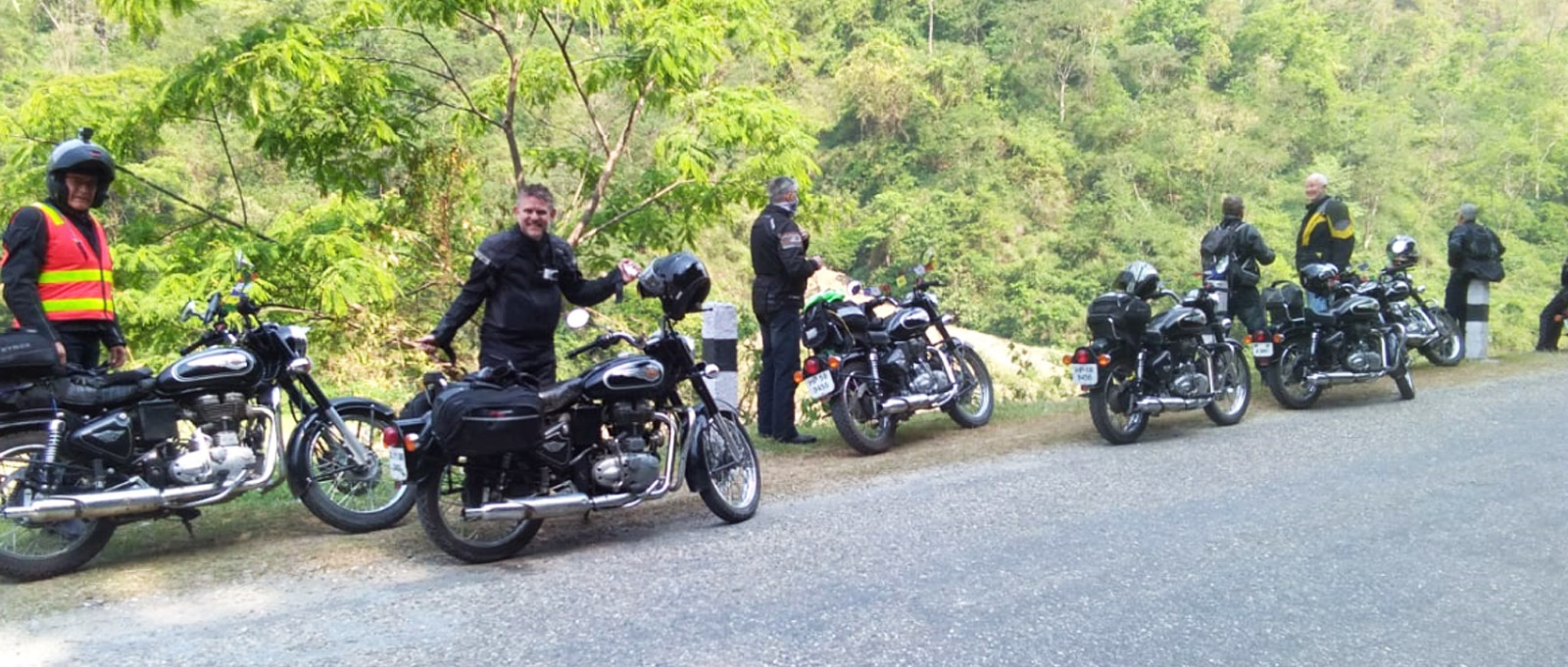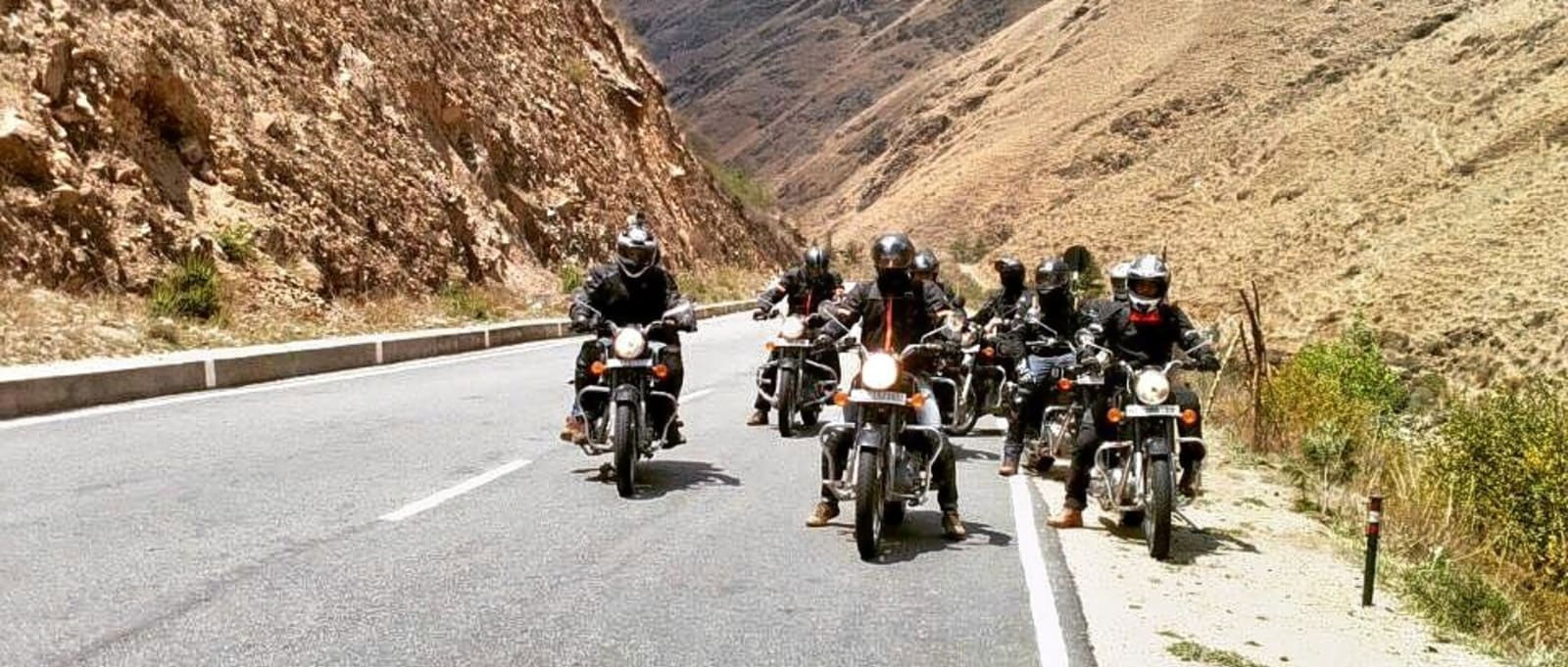If you read the news, you might think that motorcycle touring in India is only for death-wishers. Although Indian roads do not always receive favorable press coverage, they serve as a gateway to some of Asia’s most breathtaking sights. In this article, we go beyond the shocking headlines to share some safety tips for motorcycle riding in India.
Traffic Laws in India
Within 5 minutes of riding a motorcycle in India, you may believe that traffic laws are there to be broken! Indian drivers are notorious for inventing rules that suit them, and using common sense is often safer than following the rules exactly. Even so, it’s a good idea to learn the fundamental traffic rules before embarking on a motorcycle tour of India.
1. Which Side of the Road Do They Drive on in India?
In India, you should drive on the left side of the road to honour the country’s history as a British colony. However, it is not uncommon to encounter traffic driving on the right – or even in the middle of the road – particularly in congested urban areas.
2. Speed Limits
Because India adopted the metric system in the mid-twentieth century, speed limits are measured in kilometres per hour. Maximum speed limits have been implemented at the national level in India since 2014. Despite this, many roads still have state-imposed limits, so instead of guessing based on the type of road you’re on, it’s best to check the individual limits each time. National speed limits for motorcycles range from 25km/h (for roads used by pedestrians and those near schools, hospitals, etc.) to 80km/h (for the multi-lane expressways). This Wikipedia page on driving in India includes a guide to the country’s speed limits.
3. Driving Under the Influence
Put that beer down; driving while intoxicated is illegal in India. The current legal blood-alcohol limit is 30mgs of alcohol per 100ml of blood.
4. Motorcycle Laws in India
Motorcycle riders are required to wear helmets and can only carry one passenger – both basic, commonsense precautions that should be followed in any jurisdiction. Bike racing, as well as racing cars, trucks, and yes, even rickshaws, is prohibited.
5. The Weirdest Traffic Laws in India
So far, so straightforward, right? The majority of the Indian traffic laws we’ve examined thus far are logical. However, India, like most countries, has its share of strange and wonderful traffic laws. Here are a few of the most surprising… Normally, blocking a vehicle in a parking space would be considered annoying, if not antisocial. In India, however, it is simply illegal. The obstructed motorist has the right to summon a police officer, and the offender faces a Rs 1000 fine. But, given that it is currently less than $15 USD, we can assume they don’t take this law too seriously! Offering a ride to a pretty girl on the side of the road may seem like a good idea at the time, but in India, it could result in your bike being seized. This law prohibits strangers from being given rides and is intended to prevent private vehicle owners from operating unlicensed taxis.
Are the Roads Safe in India?
Most people associate driving in India with congested streets clogged with rickshaws, scooters, and pedestrians jostling for position. It’s true that roads in Indian cities like Mumbai and Delhi are notoriously congested and dangerous. Driving in these cities can feel like a game of Russian roulette, with each driver hoping the others will yield first.
However, it is worthwhile to look beyond stereotypes because the state of India’s roads varies greatly, as does the traffic that travels on them. Away from the cities, India has some of the world’s most beautiful roads, ranging from narrow mountain passes to secluded rainforest routes. The best motorcycle tour operators in India meticulously plan their journeys, avoiding the worst roads and concentrating on the most scenic routes the country has to offer.
Respecting the traffic ‘food chain’ is essential for safe motorcycle riding in India: if another vehicle is larger than yours and does not stop, give it the right of way. Safe riders use common sense and never assume other drivers will obey traffic laws. Riding a motorcycle in India is ultimately a calculated risk, but you can improve your odds by staying on safer roads, travelling with experienced guides, and employing smart road safety measures.
Road Conditions in India
Road surfaces range from tarmacadam to gravel and, in the most remote areas, dirt. Route planning comes into play here, and it’s critical to select a tough, capable, and well-serviced motorcycle. You can also train as a rider by riding on poorly maintained roads or dirt tracks near your home. Motorcyclist Online has a great article on how to ride a motorcycle on gravel and dirt roads.
Still concerned? It should warm your heart to know that our Indian motorcycle tours are fully serviced and accompanied by a service vehicle. If our riders are unable to ride due to the weather, they can ride in the service vehicle while our mechanics take over on the bike.
Which Bike is Safest for Road Trips?
Every biker seems to have a favourite bike for road trips (we’re sure this question has sparked a few arguments in bars around the world). However, when it comes to safe motorcycle riding in India, one brand stands out: Royal Enfield, which we use for our own tours.
The 500cc models of the brand have enough power to cope, but they don’t reach the breakneck speeds of some motorcycles. This makes these motorcycles easier to control and, as a result, a safer ride for India’s roads.
What Else Do I Need?
While a helmet, motorcycle boots, and gloves are required, it is also prudent to carry additional safety equipment when travelling on unfamiliar roads. Many bikers believe that knee and back protectors make them feel safer, and they can significantly reduce the physical trauma caused by an accident.
Latest Post
Motorcycle Tour to Nepal – The Positive, Negative, and Spectacular
Overcoming the Greatest Adventure: Bike Trip to Leh Ladakh
Nepal Motorbike Tour: A Traveler’s Handbook for Seeing the Himalayas on Two Wheels
Motorcycle Touring in India: A Journey Through Culture and Landscapes
Plan your Leh-Manali Bike tour with a rented Enfied Bike
Manali to Srinagar Bike Riding Experience
Motorcycle Riding Experience in Maharajas State Rajasthan
Indian Motorcycle Touring: The Ultimate Safety Guide
7 Most Adventurous Motorcycle Tours Which You Should Experience In India




